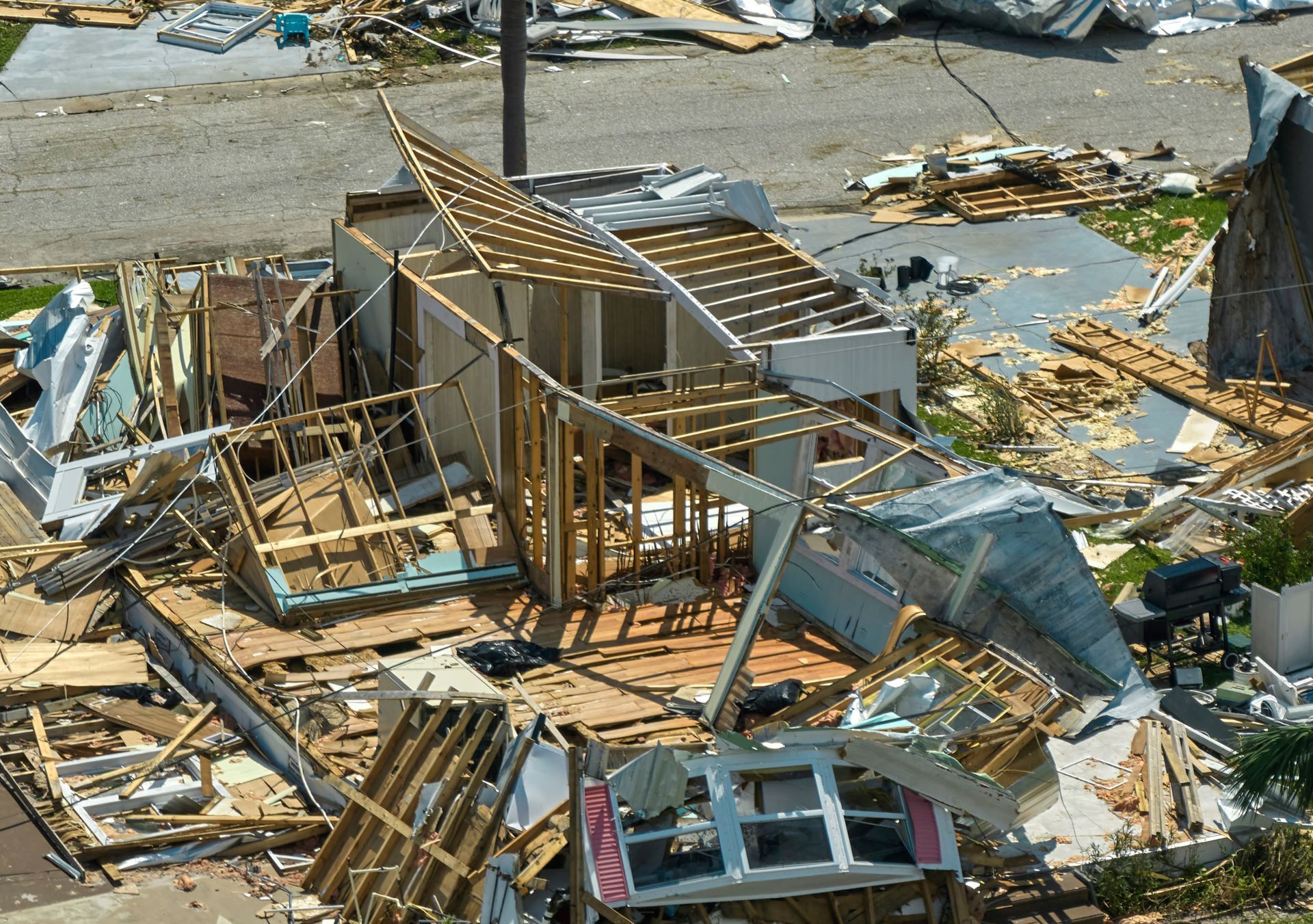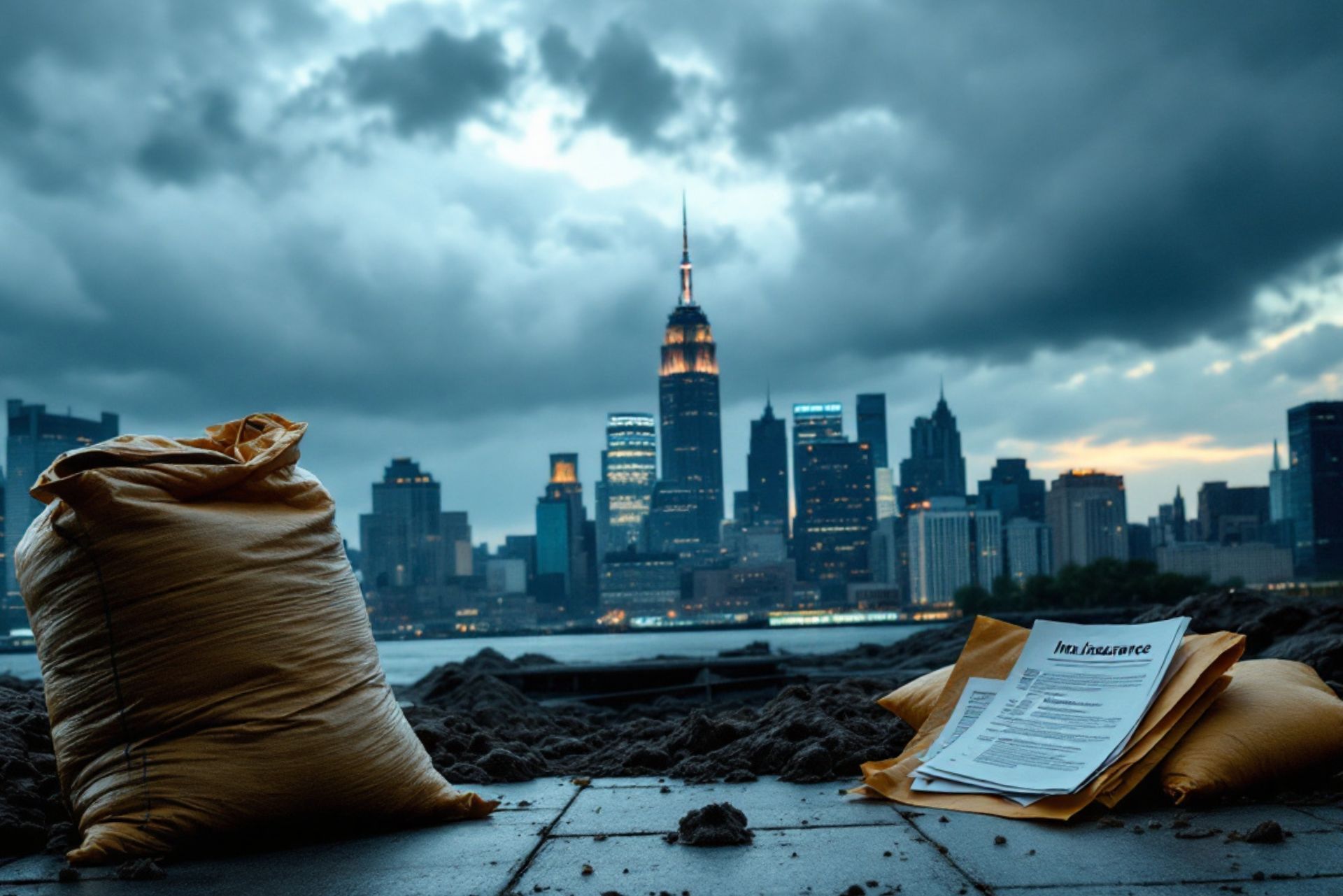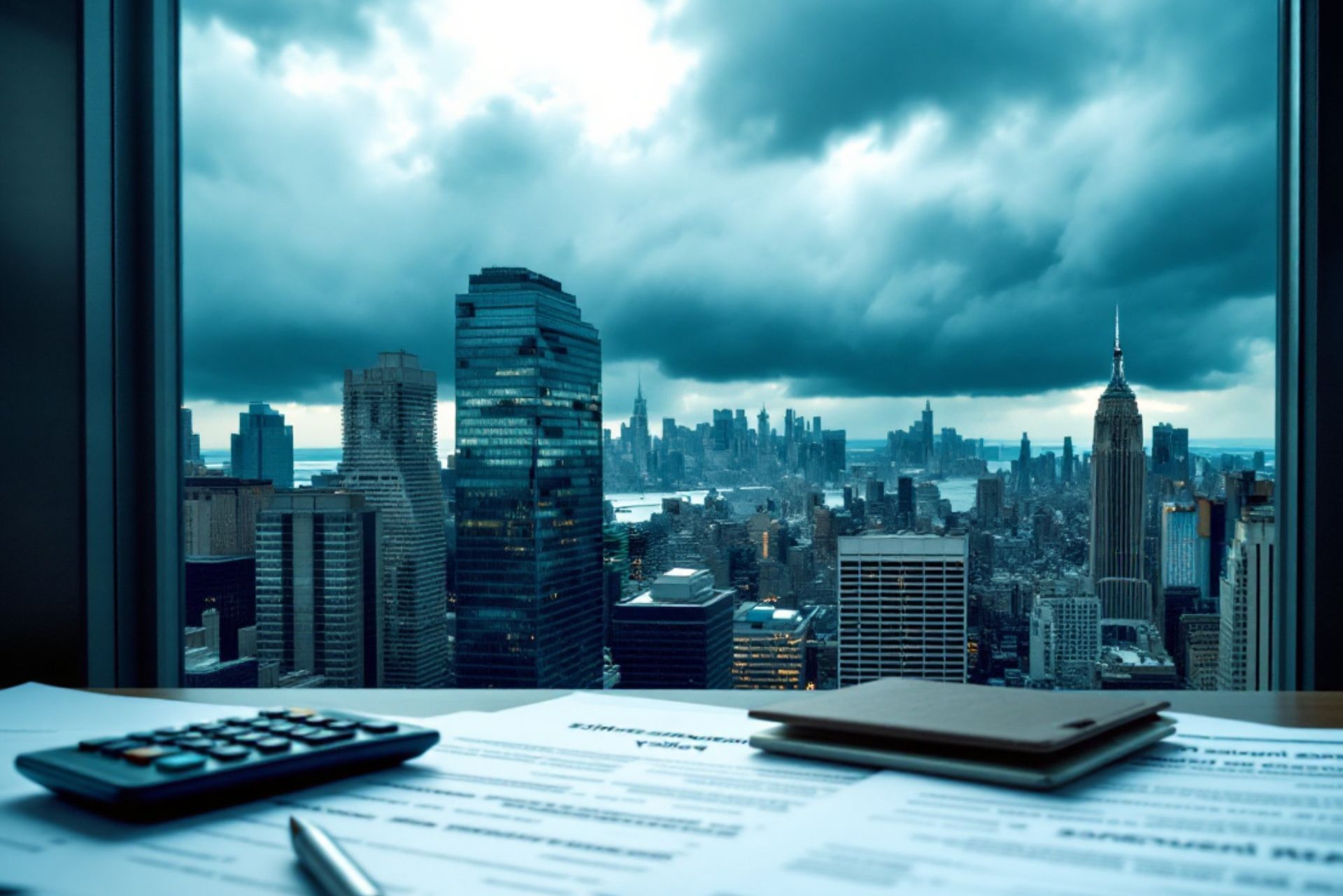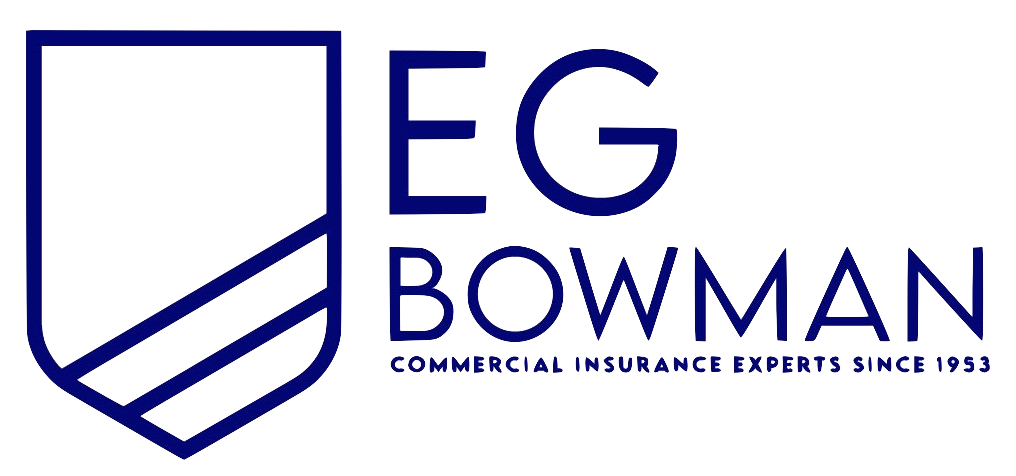New York Natural Disaster Insurance
See How We're Different:
or Call Us: 212-425-8150

Most Common Business Policies
Index
Understanding Natural Disaster Insurance
New York's Vulnerability to Natural Disasters
Navigating New York's Natural Disaster Insurance Policies
How to Purchase Natural Disaster Insurance in New York
Filing a Claim After a Natural Disaster in New York
Tips for Maximizing Your Natural Disaster Insurance Coverage
Legal Considerations for Natural Disaster Insurance in New York
Contact Us
Natural disasters can strike at any moment, bringing with them significant damage and loss. For residents of New York, understanding the intricacies of natural disaster insurance is paramount to ensuring financial security and peace of mind. This article provides a comprehensive overview of natural disaster insurance in New York, covering everything from definitions and vulnerabilities to policies and claims.
Understanding Natural Disaster Insurance
Natural disaster insurance is a specialized type of coverage designed to protect homeowners and businesses from losses incurred due to various natural disasters. It typically covers damages caused by events such as hurricanes, floods, earthquakes, and wildfires.
The importance of natural disaster insurance cannot be overstated, as it provides crucial financial support in times of crisis. Without this coverage, policyholders may face substantial out-of-pocket expenses that could lead to financial ruin.
Definition and Importance of Natural Disaster Insurance
At its core, natural disaster insurance offers a safety net for individuals and families affected by severe weather or environmental events. This protection ensures that homeowners can repair or rebuild their properties without incurring crippling debt. Moreover, having this insurance contributes to community resilience, as it can help facilitate faster recovery after a disaster. Communities with higher rates of insured properties tend to bounce back more quickly, as the influx of funds can stimulate local economies and support rebuilding efforts.
Furthermore, natural disaster insurance often encourages proactive measures among policyholders, such as investing in better construction practices or retrofitting their homes to withstand potential disasters. This not only protects individual investments but also enhances the overall safety and preparedness of the community, fostering a culture of resilience that can mitigate the impacts of future disasters.
Types of Natural Disaster Insurance
There are several types of natural disaster insurance policies available to New Yorkers. These include:
- Flood Insurance: Specifically covers damages caused by flooding, which is not typically included in standard homeowner's policies.
- Earthquake Insurance: Provides coverage for damages resulting from seismic activities, essential for areas with higher risks.
- Windstorm Insurance: Offers protection against wind damage from hurricanes and severe storms.
It's essential for residents to assess their risk exposure and select the appropriate type of insurance to tailor their coverage to their needs. Additionally, some policies may include provisions for additional living expenses, which can be invaluable if a home becomes uninhabitable due to a disaster. This coverage can help pay for temporary housing, meals, and other necessary expenses, alleviating some of the stress that comes with displacement.
Moreover, it's important to note that natural disaster insurance policies can vary significantly in terms of coverage limits, deductibles, and exclusions. Policyholders should carefully review their options and consult with insurance professionals to ensure they fully understand their policies and are adequately protected against the unique risks they face in their geographical area.

New York's Vulnerability to Natural Disasters
As a diverse state with urban, suburban, and rural areas, New York is susceptible to a range of natural disasters. An understanding of these risks is crucial for residents when considering insurance needs. The state’s unique geography, which includes mountains, rivers, and extensive coastlines, contributes to its varied exposure to different types of natural hazards. This complexity necessitates a tailored approach to disaster preparedness and risk management for individuals and communities alike.
Common Natural Disasters in New York
New York faces several types of natural hazards, including:
- Hurricanes: The eastern coast of New York can be affected by hurricanes and tropical storms, resulting in high winds and flooding. Notably, Hurricane Sandy in 2012 caused unprecedented damage in New York City, leading to a reevaluation of emergency response strategies and infrastructure resilience.
- Flooding: Heavy rain and snowmelt can lead to significant flooding, especially in low-lying areas. Areas along the Hudson River and near Lake Ontario are particularly vulnerable, and residents should be aware of flood zones and the importance of flood insurance.
- Snowstorms: While not traditionally thought of as disasters, severe snowstorms can cause extensive property damage and lead to roof collapses. The winter of 2015 saw record snowfall in Buffalo, resulting in emergency declarations and highlighting the need for effective snow removal and public safety measures.
Throughout its history, New York has witnessed devastating disasters, highlighting the urgent need for robust insurance coverage. The aftermath of these events often reveals the critical importance of preparedness and the role that insurance plays in recovery. Residents are encouraged to stay informed about local disaster response plans and to participate in community preparedness initiatives to mitigate the impacts of future disasters.
Assessing Your Risk in Different Regions of New York
Different regions within New York have varying levels of vulnerability to natural disasters. For example, coastal areas face higher risks from hurricanes and flooding, while western New York may experience more earthquakes. It is essential for residents to evaluate local risks and consult reports from FEMA and the New York Emergency Management Office to better understand their specific vulnerabilities. Additionally, urban areas, with their dense populations and infrastructure, may be more susceptible to the cascading effects of a disaster, such as power outages and transportation disruptions, which can exacerbate the impact on communities.
Moreover, climate change is altering the landscape of natural disasters, making it even more critical for New Yorkers to stay informed. Rising sea levels threaten coastal communities, while increased rainfall patterns can lead to more frequent and severe flooding events. Residents should not only assess their current insurance coverage but also consider future risks as they plan for the long term. Engaging with local government initiatives aimed at enhancing resilience can also provide valuable resources and support in navigating these challenges.
Once you have a clear understanding of natural disaster insurance, the next step is navigating the specific policies available in New York. Knowing the coverage options and limitations is vital for making informed decisions.
Coverage and Exclusions
Understanding what is covered by a policy is critical. Most standard homeowner insurance policies may not include coverage for natural disasters like floods or earthquakes. It's advisable to review these exclusions carefully and consider supplemental policies as necessary.
Additionally, many natural disaster policies may have specific limits on the total payout for personal property or for temporary living expenses if your home becomes uninhabitable. Make it a priority to clarify these aspects with your insurance provider. Furthermore, it's important to note that certain areas of New York may be more prone to specific types of natural disasters, such as hurricanes in coastal regions or heavy snowfall in upstate areas. This geographical risk can influence not only the availability of coverage but also the premiums associated with it, making it essential to tailor your insurance choices to your unique situation.
Understanding Deductibles and Premiums
Deductibles are the amounts policyholders are responsible for before insurance coverage kicks in, and they can vary widely, impacting overall costs. In New York, it's not uncommon for natural disaster policies to have higher deductibles than traditional homeowner insurance due to the nature of these events.
Premiums will also vary based on the type of coverage and the specific risks in your location. It’s essential to shop around, compare different plans, and understand how changes in factors such as home location and building materials can influence costs. Additionally, some insurers may offer discounts for homes equipped with certain safety features, such as storm shutters or elevated foundations, which can mitigate damage during a disaster. Therefore, investing in these improvements not only enhances your home’s resilience but may also lead to more favorable insurance terms, ultimately providing peace of mind in the face of unpredictable natural events.
How to Purchase Natural Disaster Insurance in New York
Purchasing natural disaster insurance is a process that requires careful planning and research. Knowing how to select the right provider and navigate the paperwork can simplify this complicated decision.
Choosing the Right Insurance Provider
When selecting an insurance provider, consider their reputation, financial stability, and customer service ratings. Look for companies that specialize in natural disaster insurance or have extensive experience managing claims in disasters. It's important to ensure that the insurer has a solid track record of handling claims efficiently and fairly, as this can significantly impact your experience during a stressful time.
Online reviews, testimonials, and referrals from friends or family can be beneficial in identifying insurers that meet your needs. Additionally, check if the provider is licensed in New York and has a history of operating in the state, as local knowledge can be crucial when dealing with specific risks such as hurricanes or floods. It's also wise to consult with an insurance agent who can provide tailored recommendations based on your specific situation, helping you navigate the nuances of different policies available in your region.
Steps to Purchasing a Policy
The process of purchasing natural disaster insurance generally involves several key steps:
- Determine your insurance needs based on the risks you face in your area.
- Request quotes from multiple providers to compare coverage options and costs.
- Carefully review the terms of each policy, noting what is included and excluded.
- Finalize the policy with your chosen provider, ensuring that all details are correctly recorded.
By following these steps, you can secure a policy that best suits your needs and provides peace of mind. It's also advisable to periodically review your coverage, especially after significant life changes such as renovations, moving, or changes in local risk factors. This ensures that your policy remains aligned with your current situation and adequately protects your assets against potential disasters.
Moreover, consider the importance of understanding the claims process before a disaster strikes. Familiarize yourself with how to file a claim, the documentation required, and the timelines involved. This proactive approach can save you valuable time and stress when you need to access your coverage most. Additionally, some insurers offer resources or workshops to educate policyholders on disaster preparedness, which can further enhance your readiness in the face of natural calamities.
Filing a Claim After a Natural Disaster in New York
In the event of a disaster, knowing how to file a claim and deal with insurance adjusters is critical to receiving timely compensation.
When and How to File a Claim
It is advisable to file a claim as soon as possible after a natural disaster. Most insurance policies include a deadline for submitting claims. To file, gather necessary documentation, including photos of the damage and a detailed list of items lost or damaged.
Contact your insurance provider's claims department and follow their procedures for reporting the loss. Ensure that you keep detailed records of all communications and documentation related to your claim. Additionally, consider reaching out to local disaster relief organizations that may offer assistance in navigating the claims process. These organizations often have resources and experienced volunteers who can guide you through the intricacies of filing a claim, ensuring that you do not overlook any critical steps or deadlines.
Dealing with Insurance Adjusters
After filing a claim, the insurance company may send an adjuster to evaluate the damages. It is crucial to be prepared; provide clear, honest information, and present all documentation you have collected.
Be proactive in communicating with the adjuster, and don’t hesitate to ask for clarification if needed. Building a good rapport can go a long way in ensuring a smooth claims process. Remember that adjusters are often dealing with numerous claims following a disaster, so being patient yet persistent can help keep your claim on their radar. It may also be beneficial to familiarize yourself with common practices and tactics used by adjusters, as this knowledge can empower you to advocate effectively for your interests. Furthermore, consider consulting with a public adjuster if you feel overwhelmed; they can represent your interests and help negotiate a fair settlement based on the extent of your losses.

Tips for Maximizing Your Natural Disaster Insurance Coverage
Once you've secured natural disaster insurance, it’s essential to take steps to maximize your coverage and ensure that you are adequately protected.
Regularly Review and Update Your Policy
Life changes such as renovations, new purchases, or changes in family status can affect your insurance needs. It’s wise to review your policy regularly, ideally every year, to ensure that it reflects your current situation and adequately covers your risks. For instance, if you've added a new room or made significant upgrades to your home, these improvements should be documented and communicated to your insurer to adjust your coverage accordingly. Additionally, consider any changes in local disaster risk assessments, as these can impact your policy's relevance and effectiveness.
Mitigation Measures to Reduce Risk
Investing in mitigation measures can help reduce the overall risk of damage during a disaster. These may include:
- Elevating your home in flood-prone areas.
- Reinforcing the roof and windows against wind damage.
- Creating defensible space around your property to combat wildfires.
Implementing such strategies can not only lower potential damages but might also lead to reduced premiums. Furthermore, staying informed about local building codes and regulations can guide you in making improvements that are both effective and compliant. Engaging with community programs focused on disaster preparedness can also provide valuable insights and resources, such as workshops on emergency planning and local hazard assessments. By collaborating with neighbors, you can create a more resilient community, which can further enhance your individual insurance coverage through collective risk reduction.
Legal Considerations for Natural Disaster Insurance in New York
Understanding the legal aspects of natural disaster insurance is fundamental. New York has its own set of regulations that affect how insurers operate and how claims are handled.
State Laws and Regulations
New Yorkers should be aware of state laws governing insurance policies, including regulations regarding mandatory disclosures from insurers and the handling of claims. Familiarizing yourself with these can empower you to make informed choices and advocate for your rights.
Dispute Resolution and Legal Recourse
If you encounter issues with an insurance claim, New York law provides various avenues for dispute resolution, including mediation and arbitration. Understanding these options can help you navigate conflicts and seek equitable solutions.
In some cases, legal action might be necessary, so keeping comprehensive documentation throughout the claims process is critical to supporting your case.
In conclusion, natural disaster insurance is an essential safeguard for New Yorkers, offering protection against the unpredictable nature of disasters. By understanding the policies, assessing risks, and staying informed about coverage options and legal considerations, residents can navigate this often complex terrain with greater confidence.
